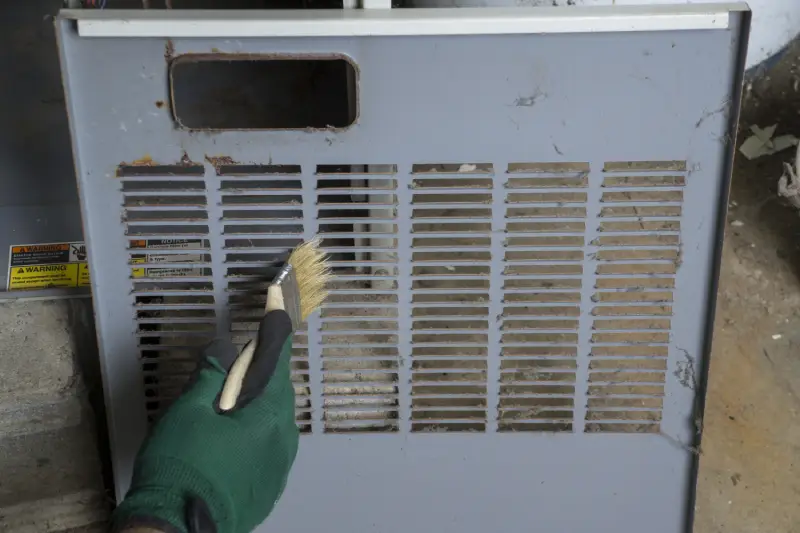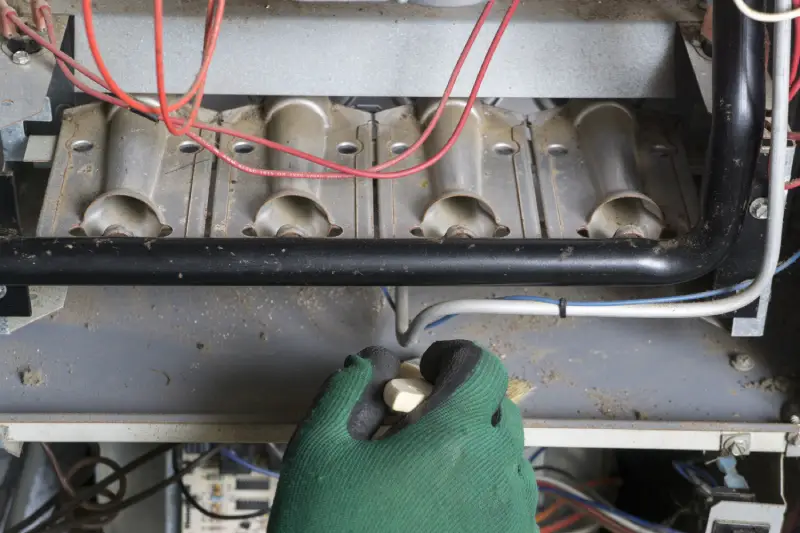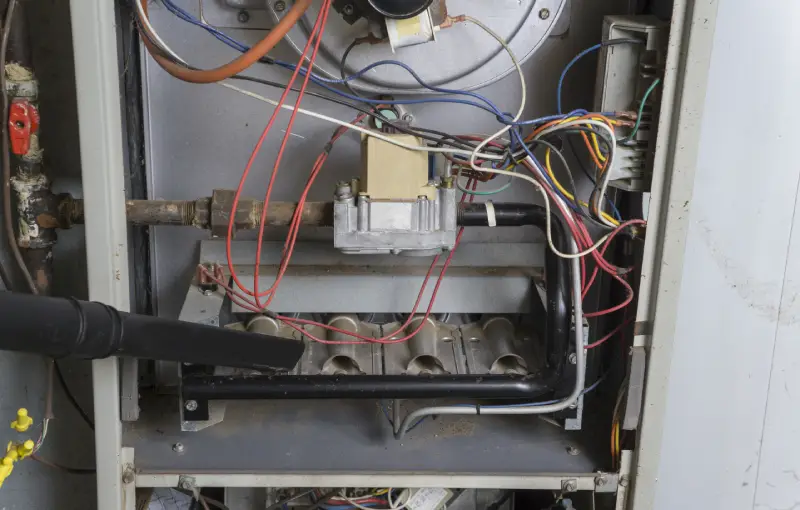
Aire Serv explains how to clean a gas furnace for optimal performance and safety.
- Turn off power and gas supply before starting.
- Remove and clean the furnace panels.
- Vacuum dust and debris from burners and blower compartment.
- Inspect and replace the air filter.
- Reassemble and restore power and gas.
If you’ve ever wondered how often you should clean a gas furnace, you’ve come to the right place. We know all about furnace cleaning.
Many people don’t realize that preventative gas furnace cleaning and maintenance will keep it running efficiently and ensure your system provides years of reliable service. To keep your furnace in peak condition and avoid emergency repairs, invest a few hours in gas furnace cleaning.
So, how often should you clean a gas furnace? It really depends on the manufacturer's recommendations, the age and condition of the furnace, and the operating environment. It is recommended to perform maintenance on your gas furnace annually. Cleaning should be done before the start of the heating season to ensure it operates efficiently and safely during the colder months.
Safety First
Before you get started, turn off both the power (circuit breaker) and the gas supply (valve) to the furnace. Taking these precautionary steps ensures safety while working on the unit. Also, be sure to wear protective gear such as a face mask, safety glasses, and gloves when cleaning.

Gather Your Supplies
Before you dive into the cleaning process, make sure you have the appropriate supplies on hand. Gather the following:
- Screwdrivers
- Ratchet & socket set
- Vacuum with an upholstery brush attachment
- Small, stiff-bristled brush
- New furnace filter
- Emery cloth
- Straw
- Lightweight machine oil
No need to worry if you don’t have these items or feel intimidated by the cleaning process. A local HVAC professional can help you cross this chore off your list. Hiring a local pro means you won’t have to struggle to figure out things like how to clean a flame sensor on a gas furnace.!

Clean the Burners
Start by wiping exterior surfaces with a damp rag. Lift the furnace access door up and out to remove it. Loosen the screws and remove the burner cover (if you have one). Vacuum the burners and furnace base using a shop vac or household vacuum with a wand/upholstery attachment. Use extensions if necessary, doing your best to reach the back. Lift the blower door to vacuum the compartment. Keep an eye out for soot, which indicates poor combustion and requires further attention.
Clean the Heat Exchanger
Open the access panels on the furnace to gain access to the heat exchanger. Follow the manufacturer's instructions for safely opening the panels. Once the panels are removed, visually inspect the heat exchanger for any visible signs of dirt, dust, soot, or corrosion. Look for cracks or damage that might require immediate attention. If there is stubborn buildup, you can use a soft brush to loosen and remove the debris carefully. If you do notice any cracks or damage, contact a local HVAC professional to inspect the damage and make any necessary repairs.
Clean the Blower
Gently clean the blower with a vacuum, being careful not to disturb the wiring and counterweights on the fan blades. Use a small brush to remove dirt or dust that may still be stuck.
Clean the Ductwork
Use a screwdriver to remove the vent covers. Insert the vacuum hose with the brush attachment into each duct and carefully vacuum the dust, debris, and loose dirt from the ductwork. Work your way from the furthest vent back toward the furnace to avoid pushing dirt further into the system.
Use a brush or broom to gently agitate the duct walls and dislodge the buildup. Be careful not to damage the ducts while doing this. Part of your furnace maintenance plan should be to have your ductwork thoroughly cleaned on an annual basis.
Test the Furnace
After cleaning the gas furnace and reassembling all components, turn on the gas supply and power. Then, set the thermostat to the desired temperature and observe the furnace's ignition, flame, and heating performance to ensure it operates smoothly and efficiently. If you notice a problem or something doesn’t seem right during testing, shut the furnace off and contact a local pro to have it checked out.
Benefits of Cleaning Your Gas Furnace
There are many benefits that come with keeping your gas furnace clean. Regularly cleaning your gas furnace extends its lifespan, ensures safe operation, improves energy efficiency, and helps maintain better indoor air quality. Regular cleaning can also help you spot and resolve problems early, which can help prevent costly repairs or a replacement.
When to Call an HVAC Professional
While cleaning your gas furnace is an important maintenance step, it’s not for everyone. If this process sounds intimidating, don’t hesitate to call for professional gas furnace maintenance. Because if you don't clean your furnace, what happens can be more costly and literally leave you old in the cold. If you’re wondering, "How much does it cost to clean a gas furnace”, it’s more affordable than you might expect! Request an appointment with your local Aire Serv® today! Each visit is backed by our Neighborly Done Right Promise®, which guarantees your satisfaction with our service.

